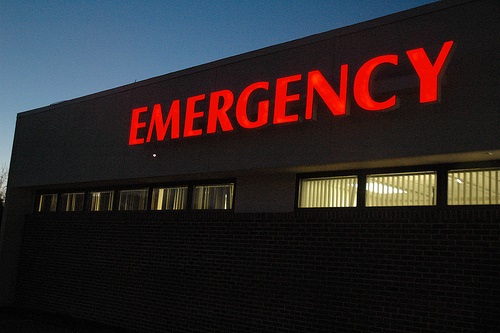
April 17, 2015; St. Louis Post-Dispatch
NPQ has been covering the growing scrutiny of hospitals and the implication of hospital ratings on the overhaul of the U.S healthcare delivery system. On April 16th, the latest development in this reform occurred when the Centers for Medicare & Medicaid Services (CMS) provided its 5-star hospital ratings to consumers on its Hospital Compare website. The ratings came from a survey based on patient satisfaction scores comparing hospitals nationwide. Measuring hospital against hospital and making the results public was intended to give consumers needed information to make the best choices when seeking value-based and patient-centered healthcare.
The survey collected patients’ responses to questions related to their perceptions of their hospital experience. Those questions were based on 11 (out of over 100) measures, including patient-to-caregiver communication about care plans, pain management, patient safety and hospital-to-home transition. Five stars were assigned to the top performers. However, since hospitals were graded on a curve, the site emphasized that a one-star rating was not a guarantee of poor care.
However, some hospital executives question whether the report gives a complete picture. For example, hospitals with many acute care patients that require complex care may present a significant difference in patient scoring. For those hospitals, scores related to rate of infection, death, and readmission might more accurately measure quality. For their patients, coordination of care is a significant factor in satisfaction. Yet these measures have not been included thus far in the 5-star data.
Sign up for our free newsletters
Subscribe to NPQ's newsletters to have our top stories delivered directly to your inbox.
By signing up, you agree to our privacy policy and terms of use, and to receive messages from NPQ and our partners.
“There’s a risk of oversimplifying the complexity of quality care or misinterpreting what is important to a particular patient, especially since patients seek care for many different reasons,” cautions the American Hospital Association.
Predominant reliance on patient reviews also may not reflect true quality of care. A Kaiser Health News analysis found that, looking at the 251 hospitals that received five stars, seven percent of all hospitals judged were small, specialty hospitals, of which there were many, and that may have skewed the results. These hospitals predominantly provide lucrative elective procedures like spine, heart, or knee surgeries.
Complicating things further is the multitude of reports from other sources, including Consumer Reports, the Leapfrog Group, the Joint Commission, and Truven Analytics. These organizations have a particular focus, whether it is on outcomes and performance, patient safety, quality or cost.
A Modern Health survey from last year shows this reporting can produce contradictory results. Of more than 230 respondents, 53 percent said their facility had received a poor rating from at least one ratings organization while receiving a high rating on similar measures during the same time period from another group. However, most respondents said that the ratings were valuable. That value may lie in the ability for hospitals to use high scores in marketing their facilities and services.
“Organizations with unexpectedly low scores, those whose immediate competitors did really well, and those that brand themselves as leaders in quality and safety may want to pay more attention to the lists.” says Alicia Daugherty, practice manager of research and insights at the Advisory Board Company.—G. Meredith Betz











